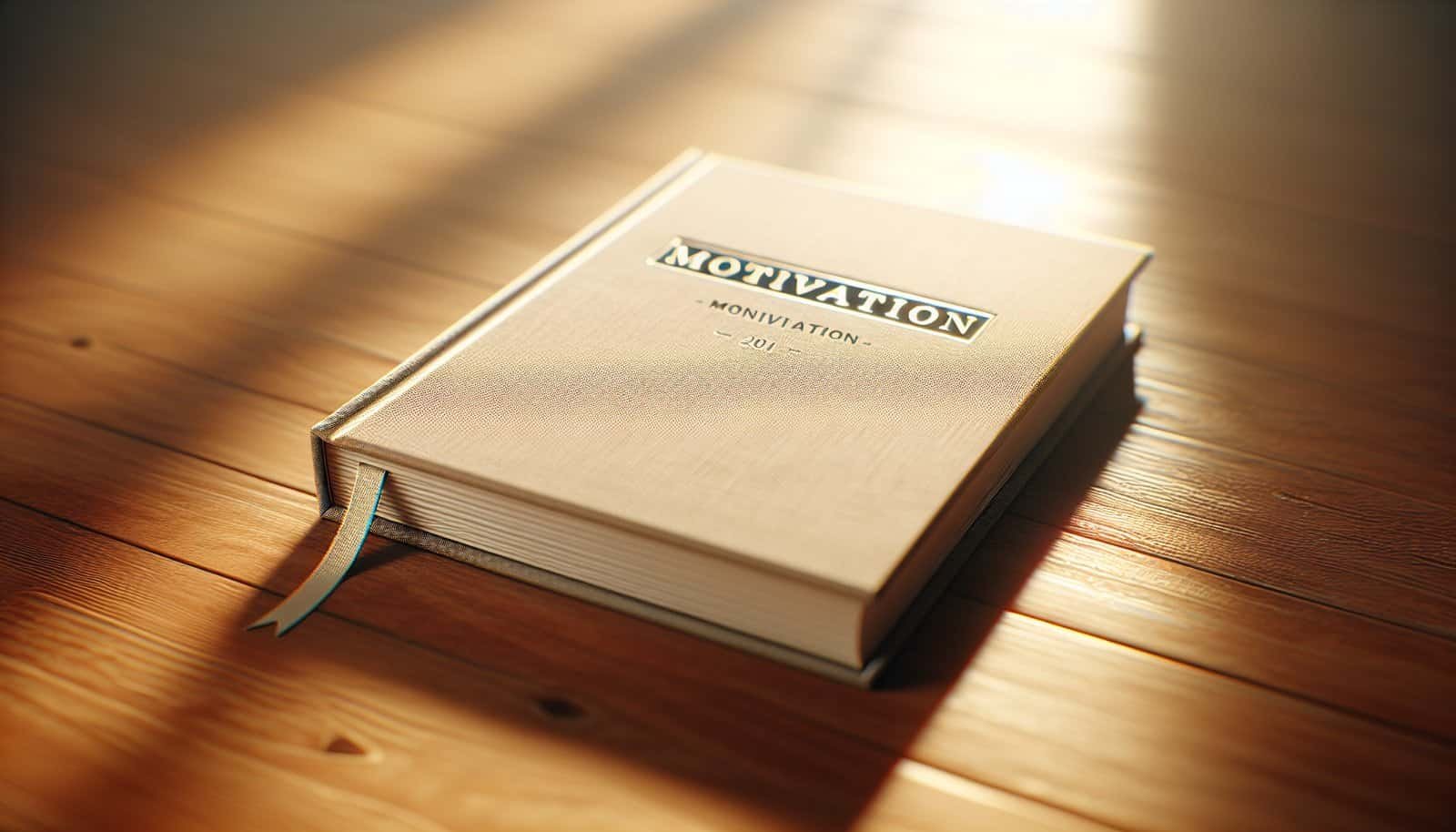Are you looking for the most motivating books to help you thrive as a freelancer and keep your energy high when work gets uncertain?
What Are The Top Motivational Books For Freelancers?
You want resources that lift your mood, sharpen your focus, and give practical steps to grow your freelance business. This guide collects the top motivational books for freelancers, explains why each one matters, and shows how you can apply the lessons to your daily routine. You’ll find summaries, actionable takeaways, and reading plans so you can turn ideas into steady progress.

Why motivation matters for freelancers
Freelancing gives you freedom, but it also brings unpredictability and isolation. You need motivation to stay consistent, pitch confidently, and manage emotional ups and downs. Books can act as steady companions that refresh your mindset, offer proven frameworks, and remind you why you chose this path.
Reading the right books helps you handle rejection, price confidently, keep learning, and create systems that reduce decision fatigue. The result is more consistent income, better client relationships, and more satisfaction with your work.
How to use motivational books effectively as a freelancer
Picking up a book is only the first step. To get the most from your reading, create a routine, extract practical actions, and measure results. Treat books as toolkits rather than sermon guides. That means turning principles into weekly experiments, not just inspirational notes on a shelf.
Set a small reading goal daily, highlight key passages, and immediately apply one concept. Revisit your notes monthly and track whether a change improved your workflow, client acquisition, or mental clarity.
How the selections were chosen
These books were selected for their practical relevance to freelancers: mindset shifts, habit formation, productivity frameworks, persuasion and marketing insight, financial confidence, and personal resilience. The list mixes classic personal development titles with business-focused works that speak directly to self-employed professionals.
What you’ll get from this guide
You’ll get:
- Clear summaries of each book’s core message.
- Specific ways to apply ideas to freelance life.
- Key quotes and actionable checklists.
- A comparison table for quick reference.
- Suggested reading order and a 30/60/90-day reading plan.
The top motivational books for freelancers (detailed list)
Below are the books that consistently motivate freelancers. Each entry explains what the book offers and how to use it in your freelance practice.
1. Atomic Habits — James Clear
Atomic Habits is a practical guide for building small routines that compound into big results. If you struggle with consistency, this book gives you tools to change tiny behaviors that dramatically improve productivity and habits over time.
Why it matters to you: As a freelancer, most wins come from small daily actions—consistent outreach, billing on time, regular learning. Clear shows how reducing friction and designing your environment makes those actions automatic.
Key takeaways:
- Focus on systems, not goals. Build processes that make desired outcomes inevitable.
- Use habit stacking to attach new routines to existing ones.
- Make habits obvious, attractive, easy, and satisfying.
How to apply it:
- Create a morning 10-minute “business” ritual: check proposals, prioritize 1 client outreach, review finances.
- Use habit stacking: after your morning coffee, send one follow-up email.
- Track wins on a visible calendar to create satisfaction and momentum.
Short quote: “You do not rise to the level of your goals. You fall to the level of your systems.”
2. The War of Art — Steven Pressfield
The War of Art is a concise book about resistance—the internal force that stops you from producing creative work. It’s blunt, motivational, and perfect when you need to push past procrastination.
Why it matters to you: Freelancers face resistance when starting big projects, pitching new clients, or raising rates. Pressfield gives you a battle plan to treat creative work like a professional discipline.
Key takeaways:
- Treat your freelance work as a profession, not a hobby.
- Show up every day regardless of mood.
- Recognize resistance and act in spite of it.
How to apply it:
- Schedule “work-only” blocks and guard them fiercely.
- Use weekly sprints to produce deliverables rather than waiting for inspiration.
- Create a simple ritual that signals work time—e.g., light a candle, close the door, play a certain playlist.
Short quote: “The professional tackles the project that will make him stretch.”
3. Deep Work — Cal Newport
Deep Work teaches how to cultivate focused, distraction-free work periods to produce high-quality outputs faster. It’s essential when you need more uninterrupted time to handle complex tasks and stand out.
Why it matters to you: Your differentiation often depends on quality—how quickly and well you solve client problems. Deep Work helps you protect high-value time for designing, writing, and strategizing.
Key takeaways:
- Schedule deep work blocks and protect them from interruptions.
- Reduce shallow work and batch administrative tasks.
- Embrace boredom to strengthen focus.
How to apply it:
- Block 60–90 minute deep work sessions for high-value tasks.
- Turn off notifications and set an out-of-office for certain hours.
- Batch emails into two or three times a day.
Short quote: “Clarity about what matters provides clarity about what does not.”
4. The Freelance Manifesto — Joey Korenman
The Freelance Manifesto is written for creative freelancers and gives practical advice on building a business, pricing, and client relationships. It’s motivational and grounded in real-world freelancing challenges.
Why it matters to you: It covers the full lifecycle of freelancing—finding clients, setting rates, delivering work, and scaling—so you can see a pathway to sustainable independence.
Key takeaways:
- Price for value, not time.
- Specialize to command higher rates.
- Build a process that clients respect and follow.
How to apply it:
- Revisit your rate card and create value-based packages.
- Identify a niche and craft a portfolio targeted to that market.
- Implement a clear client onboarding process.
Short quote: “Your work should be so tailored that clients can’t imagine asking anyone else.”
5. The E-Myth Revisited — Michael E. Gerber
The E-Myth Revisited explains why businesses fail and how to build scalable systems. While targeting small business owners, its lessons are gold for freelancers who want to scale without losing sanity.
Why it matters to you: It helps you move from freelancer (sole practitioner) to business owner by designing repeatable processes and thinking systematically about growth.
Key takeaways:
- Work on the business, not just in it.
- Create documented systems for sales, delivery, and client management.
- Standardize to free your time for strategic growth.
How to apply it:
- Draft simple SOPs for client onboarding and project delivery.
- Automate billing and reminders to cut repetitive tasks.
- Test a single process change per month to reduce bottlenecks.
Short quote: “If your business depends on you, you don’t have a business—you have a job.”
6. The One Thing — Gary Keller and Jay Papasan
The One Thing helps you identify the most important task that will make everything else easier or irrelevant. It’s about extreme focus and prioritization.
Why it matters to you: With unlimited possible tasks, you need clarity on what moves the needle most for revenue and growth. This book helps you prioritize effectively.
Key takeaways:
- Ask the focusing question: “What’s the one thing you can do such that by doing it everything else will be easier?”
- Time-block for the one thing.
- Protect your most productive hours.
How to apply it:
- Each week, choose one revenue-generating priority and schedule it first.
- Say “no” to at least one low-value task daily.
- Use the one thing to guide business decisions (offer expansion, marketing focus).
Short quote: “Success is about doing the right thing, not about doing everything right.”
7. Start With Why — Simon Sinek
Start With Why explores how clarity of purpose drives influence and consistent decisions. It’s motivational because it helps you reconnect with meaning beyond money.
Why it matters to you: Clients choose freelancers they believe in. If you can communicate why you do the work, you’ll attract better matches and feel more energized.
Key takeaways:
- Clearly articulate your why to attract aligned clients.
- Lead with purpose in pitches and your brand messaging.
- Use your why to guide pricing and decision-making.
How to apply it:
- Write a short “why statement” that explains your mission in one sentence.
- Use your why in your About page, proposals, and initial conversations.
- Use it to decide which clients to accept and which to decline.
Short quote: “People don’t buy what you do; they buy why you do it.”
8. Mindset — Carol S. Dweck
Mindset discusses fixed vs. growth mindsets and how beliefs about talent and effort shape long-term achievement. It’s motivating because it reframes failure as a chance to learn.
Why it matters to you: Freelancing involves learning new skills and recovering from setbacks. Adopting a growth mindset reduces fear and increases resilience.
Key takeaways:
- View challenges as opportunities to improve.
- Praise effort and strategies, not innate talent.
- Embrace feedback as a critical tool for growth.
How to apply it:
- Reframe a recent setback as a learning goal with specific actions.
- Celebrate experiments, not just wins.
- Seek feedback regularly and create a plan to implement it.
Short quote: “Becoming is better than being.”
9. The 4-Hour Workweek — Timothy Ferriss
The 4-Hour Workweek advocates for efficiency, outsourcing, and designing a lifestyle business. While parts are polarizing, it motivates you to question norms and create freedom.
Why it matters to you: It encourages you to automate and outsource low-value tasks, giving you more time for high-impact work and life priorities.
Key takeaways:
- Eliminate tasks that don’t move your business forward.
- Outsource repetitive work.
- Test mini-retirements and flexible models to avoid burnout.
How to apply it:
- Identify tasks to outsource (bookkeeping, admin) and hire virtual assistants.
- Create a weekly “low-information” day to recharge and think.
- Test a micro-experiment for pricing or packaging to increase margins.
Short quote: “Focus on being productive instead of busy.”
10. The Joy of Missing Out — Tonya Dalton
The Joy of Missing Out is about intentional time management and protecting your attention. It’s motivational because it helps you reclaim time and prioritize what truly matters.
Why it matters to you: Freelancers often feel pressure to be available 24/7. This book provides practical rules for time, energy, and focus.
Key takeaways:
- Time-block around priorities.
- Set boundaries to protect personal energy.
- Curate commitments to reduce decision fatigue.
How to apply it:
- Build a weekly schedule with three non-negotiable priorities.
- Create office hours and communicate them clearly to clients.
- Use a weekly review to assess alignment and cancel nonessential commitments.
Short quote: “You don’t have to do it all to be successful.”
11. The Subtle Art of Not Giving a F*ck — Mark Manson
This book reframes what to care about and helps you identify meaningful values. It’s blunt, irreverent, and motivating for setting boundaries and prioritizing meaningful work.
Why it matters to you: When you stop trying to please everyone, you can focus on clients and projects that matter to you most, improving quality and satisfaction.
Key takeaways:
- Choose values deliberately.
- Accept trade-offs and embrace limitation.
- Focus on what’s within your control.
How to apply it:
- List three values that matter and use them to accept or refuse projects.
- Practice saying “no” to low-value requests.
- Use a “values checklist” before taking on new clients.
Short quote: “You can’t be an important and life-changing presence for some people without also being a joke or an embarrassment to others.”
12. Drive — Daniel H. Pink
Drive explains intrinsic motivation—autonomy, mastery, and purpose—and how to harness it. For freelancers, it explains why you can excel when you structure work around autonomy and mastery.
Why it matters to you: You already have autonomy; Drive shows how to cultivate mastery and purpose for sustained motivation and business growth.
Key takeaways:
- Autonomy fuels engagement—design your work to increase control.
- Mastery requires deliberate practice.
- Purpose is a multiplier for motivation.
How to apply it:
- Schedule weekly skill-building time.
- Create projects that stretch skills in client work.
- Reframe tasks around purpose to increase intrinsic drive.
Short quote: “Control leads to compliance; autonomy leads to engagement.”
13. Building a StoryBrand — Donald Miller
Building a StoryBrand teaches clear messaging using storytelling principles. It’s motivational because clear communication drives better client responses and reduces pitch friction.
Why it matters to you: You’ll win more pitches and get clearer project scopes when your brand messaging highlights client transformation, not just features.
Key takeaways:
- Make the client the hero; position yourself as guide.
- Use clear, customer-focused messaging.
- Simplify offers so prospects understand the value immediately.
How to apply it:
- Rewrite your homepage and proposal opener with a StoryBrand template.
- Test two messaging variants in outreach and track response rates.
- Use customer success stories to demonstrate transformation.
Short quote: “If you confuse, you’ll lose.”
14. Rework — Jason Fried and David Heinemeier Hansson
Rework challenges conventional business wisdom and advocates for simplicity, speed, and practicality. It’s motivating because it gives permission to ignore unnecessary complexity.
Why it matters to you: Freelancers can apply its lessons to get more done with less planning and fewer meetings.
Key takeaways:
- Start small and ship fast.
- Embrace constraints and don’t wait for perfection.
- Say no to busywork and unnecessary expansions.
How to apply it:
- Launch a minimal service offering and iterate.
- Cut meetings and reduce client approval layers.
- Use short feedback loops to improve deliverables.
Short quote: “You don’t need more time; you need to decide.”
15. The Lean Startup — Eric Ries
The Lean Startup introduces validated learning and rapid experimentation. For freelancers, it shows how to reduce risk when launching services and testing pricing.
Why it matters to you: Instead of guessing what clients want, test small offers and measure actual demand.
Key takeaways:
- Build-measure-learn: iterate quickly.
- Use minimum viable products (MVPs) for offers.
- Use metrics that show true customer value.
How to apply it:
- Launch a low-cost pilot service to test demand.
- Measure conversion and retention to validate pricing.
- Use client feedback cycles to iterate offers.
Short quote: “If you cannot fail, you cannot learn.”

Quick comparison table: Which book to read for what problem?
| Problem you face | Best book(s) to read | Why it helps |
|---|---|---|
| Procrastination and resistance | The War of Art | Teaches daily discipline and professional mindset |
| Building small, steady habits | Atomic Habits | Practical habit design and habit stacking |
| Need deep focused time | Deep Work | Schedules and rituals for focus |
| Growing or systematizing your business | The E-Myth Revisited, Rework | Processes and simplification |
| Prioritization overload | The One Thing, Joy of Missing Out | Helps you choose what matters |
| Purpose and messaging | Start With Why, Building a StoryBrand | Clarifies mission and client-facing story |
| Motivation and values | The Subtle Art of Not Giving a F*ck, Mindset | Reframes values and growth assumptions |
| Testing new offers | The Lean Startup | Teaches validated learning and MVPs |
| Increasing autonomy and mastery | Drive | Framework for intrinsic motivation |
| Seeking efficiency and lifestyle design | The 4-Hour Workweek | Automation and outsourcing strategies |
Suggested reading order and why
Reading order depends on your immediate needs, but here’s a recommended path that builds foundational mindset, habits, then business systems:
- Atomic Habits — build reliable routines.
- The War of Art — commit to showing up regularly.
- Deep Work — protect high-value time.
- The One Thing — practice prioritization.
- The Freelance Manifesto or The E-Myth Revisited — build systems and pricing strategy.
- Building a StoryBrand — refine messaging and proposals.
- The Lean Startup — test offers and pricing.
- Start With Why and Drive — deepen purpose and intrinsic motivation.
- Rework and The 4-Hour Workweek — simplify operations and outsource.
- Mindset and The Subtle Art of Not Giving a F*ck — continue mental resilience.
This order sets you up to form habits, fight resistance, focus, and then structure a business that scales.

30/60/90-day reading and action plan
Use this plan to turn reading into measurable results. Each phase mixes reading with small experiments and regular reviews.
| Timeframe | Reading focus | Actions to take |
|---|---|---|
| Days 1–30 | Atomic Habits, The War of Art | Establish 2 new habits (daily outreach, weekly billing), create a short daily ritual for work, track habit streaks |
| Days 31–60 | Deep Work, The One Thing, Joy of Missing Out | Implement 60–90 minute deep work sessions, choose one weekly priority, block office hours, batch emails |
| Days 61–90 | The Freelance Manifesto, Building a StoryBrand, The Lean Startup | Update pricing and packages, rewrite your homepage and proposal templates, run a 2-week pilot offer and measure conversions |
At the end of each 30-day block, evaluate: did revenue, client quality, or mental clarity improve? If not, adjust the next block accordingly.
How to extract maximum value from each book
- Keep a reading journal: summary, three key actions, and one measurable goal.
- Implement immediately: pick one experiment per chapter to try for a week.
- Share insights with peers: accountability accelerates application.
- Create a “bookboard”: pin key quotes and actions to a visible place in your workspace.

Practical tools and checklists to implement lessons
- Client onboarding checklist: contract, intake form, timeline, expectations.
- Weekly review template: wins, client updates, experiments, next week’s one thing.
- Habit tracker: simple calendar to cross off habit days.
- Pricing checklist: list of services, value metrics, competitor rates, test price.
Use these tools to translate motivation into repeatable actions that free you from crisis-mode freelancing.
Common mistakes freelancers make when reading motivational books
- Consuming without implementing: reading feels productive, but nothing changes.
- Treating books as one-off pep talks: motivation fades without systems.
- Applying everything at once: too many simultaneous changes reduce follow-through.
- Comparing progress to unrealistic standards: measure personal progress instead of others’ highlight reels.
To avoid these traps, limit experiments to one per week and track simple metrics like client replies, invoices paid on time, or hours spent in deep work.

Frequently asked questions
Q: How many of these books should you read in a year? A: Quality over quantity. Aim for 6–10 books per year and follow through with plans. It’s better to apply lessons from fewer books deeply than to skim many superficially.
Q: Should you prefer audiobooks or print? A: Use whatever keeps you engaged. Audiobooks are great for commuting and getting high-level ideas; print or e-books are better for highlighting and note-taking when implementing.
Q: How do you know which book to start with? A: Start with the immediate problem. If consistency is the issue, begin with Atomic Habits. If focus is the issue, begin with Deep Work. If you need a mindset shift, pick The War of Art or Mindset.
Q: Are motivational books enough to grow your freelance business? A: Books are a catalyst, not a complete solution. Combine reading with action, mentorship, networking, and analytics to create durable growth.
Building a personal reading routine that sticks
- Set a daily 20–30 minute reading time, preferably in the morning or before bed.
- Pair reading with another habit (habit stacking): after morning coffee, read 20 minutes.
- Keep a “next read” on hand so you don’t lose momentum.
- Use note-taking tools (notebook, digital app) to capture actions and quotes.
How to measure whether a book’s lessons worked for you
Create simple metrics tied to actions:
- Number of outreach messages sent per week.
- Number of proposals and conversion rate.
- Hours spent in deep work weekly.
- Monthly revenue and average project size.
- Stress or satisfaction score (1–10) in weekly reviews.
Compare before-and-after metrics across 30–90 day periods to see tangible change.
Short checklist: Turning lessons into results
- Choose one book and read with a goal in mind.
- Summarize the top three ideas in one sentence each.
- Pick one action to implement immediately.
- Track the action for 14–30 days.
- Review results and iterate.
This repeatable process keeps your reading practical and profitable.
Additional books and resources to consider
If you want more specialized reads for sales, negotiation, or creativity, consider:
- Influence — Robert Cialdini (persuasion and ethics)
- Never Split the Difference — Chris Voss (negotiation)
- Show Your Work! — Austin Kleon (self-promotion and creative sharing)
- Creativity, Inc. — Ed Catmull (creative leadership and teams)
Each of these gives tactical methods that can boost your freelance practice in specific areas.
Final recommendations
Pick a single pain point you want to change this month—consistency, focus, pricing, or messaging—and choose one book from this list to address it. Commit to one practical experiment, measure results, and repeat. Over time, small consistent improvements compound into a more sustainable freelance business and a more motivated you.
You don’t have to read everything at once. Prioritize the books that solve your immediate problems, apply the lessons methodically, and use the comparison table and reading plan above to build a long-term learning roadmap that fits your freelance life.
